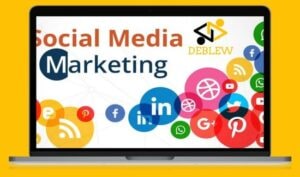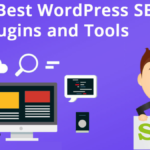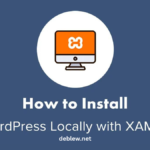When it comes to marketing, any business must stay up to date with the latest trends. B2C Social Media Marketing (SMM) is one of the most important and effective forms of digital marketing in today’s market.
It allows businesses to reach their target audience quickly and efficiently, creating a more personal connection between business and customer.
The key to successful B2C SMM is understanding how customers use social media platforms, their interests, and how your product or service can benefit them.
Any good SMM strategy should include developing content that resonates with your target market while using creative approaches that catch their attention.
Additionally, it’s important to stay active on social media platforms so that you can consistently engage with your customers regularly.
This could include commenting on posts, responding quickly to customer inquiries or providing helpful advice to strengthen relationships.
What is B2C Social Media Marketing?
B2C social media marketing is the practice of using social media platforms to promote products and services to customers. It’s a powerful tool that can help businesses reach their target audiences, build relationships with them, and turn prospects into paying customers.
The goal of B2C social media marketing is twofold: to boost awareness about a brand or product, as well as to increase sales directly from social networks.
For example, a company may post content on Twitter and Instagram promoting new products or deals to draw attention from potential buyers.
Utilising customer reviews, engaging with followers through comments and questions, and creating contests and giveaways – are all effective tactics for increasing sales via social media channels.
Why do you need B2C Social Media Marketing?
B2C marketers must understand how to use social media platforms to maximize the potential of their marketing campaigns.
Social media provides numerous opportunities for B2C marketers, such as creating brand awareness by increasing visibility and developing relationships with customers through direct engagement.
It also offers the chance for companies to build up a community of followers who are interested in their product or service.
This can result in increased sales, as well as more positive customer feedback which could lead to more referrals and repeat business.
Additionally, it allows brands to stay ahead of their competitors by monitoring trends and responding quickly.
Why is social media important for B2C?
The power of social media is increasing for companies to market to consumers. Not only does it provide a great platform to share information and updates, but it also allows businesses to engage with their customers in real-time.
Through social media platforms such as Facebook, Twitter, Google Plus and LinkedIn, companies can reach out directly and build relationships with their customer base.
In the B2C space, social media provides a valuable opportunity for companies to gain feedback from their customers on products and services.
Companies can use this feedback to improve upon existing offerings or create brand-new ones that better meet the needs of their audience.
Additionally, businesses can use social media channels as a means of sharing promotional offers or discounts that incentivise purchases from existing and potential customers alike.
Tips for B2C Social Media
With the advent of technology, businesses have embraced social media as a tool to reach their customers. Business-to-consumer (B2C) companies can use social media platforms such as Twitter, Instagram, and Facebook to effectively reach their target audience.
However, with so many different channels to choose from, it can be difficult for B2C companies to know which strategies they should employ on these channels. Here are some tips for B2C companies looking to leverage social media:
Choose the right platforms
When it comes to B2C social media marketing, choosing the right platforms is essential. Platforms such as Facebook, Instagram, Twitter and LinkedIn offer distinct advantages for businesses looking to engage customers through social media.
However, each platform also has unique features that can help or hinder a company’s overall marketing strategy. Before deciding which platforms to use, consider your target audience and their preferred methods of communication.
For example, if you’re targeting young adults with visual content, platforms like Instagram and Snapchat may be more effective than Twitter or LinkedIn.
If your target demographic is older professionals who prefer written content then those latter two platforms may be a better fit for your desired outcomes. Additionally, many companies choose to leverage multiple channels to reach the widest possible audience.
Post engaging content
Posting engaging content on social media is essential for any business-to-consumer (B2C) social media marketing strategy.
To be successful, brands must post content that engages their target audience and encourages them to take action.
This allows businesses to achieve their goals of driving sales, increasing brand awareness, and creating customer loyalty.
When creating content for social platforms such as Facebook and Instagram, it’s important to use visuals like photos or videos that grab attention quickly.
Additionally, using hashtags relevant to the industry or topic helps get the post seen by a larger audience while also allowing users interested in that specific topic to find your posts more easily.
Furthermore, using polls and surveys can help companies understand what kind of content resonates with their target customers so they can adjust accordingly in the future.
Interact with your audience
It’s an opportunity to engage with customers, build relationships, and develop loyalty through creative campaigns. However, it can be difficult to know where to start when it comes to creating meaningful interactions.
The key is to think of social media as a two-way street. Instead of just pushing out content, actively listen and respond to what your followers have to say.
Ask questions, create polls, or even host online events like webinars or live streams that allow people to connect directly with you and other members of your brand’s community.
Not only will this help you better understand their needs and interests, but it will also make them feel seen and heard which can lead to long-term customer loyalty.
Run contests and promotions
One popular method of achieving these goals is by running contests and promotions on social media platforms. Doing so can be a great way to increase brand awareness, build relationships with customers, and drive more website traffic.
Contests and promotions come in all shapes and sizes, from simple giveaways to photo or video competitions.
For example, companies can encourage followers to submit their content related to the product or service being advertised or have them tag friends when they share the post.
Social media campaigns are also an effective way to engage customers by offering discounts or special offers like free shipping codes.
Whatever contest or promotion you choose should be tailored specifically towards your target audience’s interests while emphasizing your main message and staying on-brand with your company’s values.
Share reviews and testimonials
By incorporating customer reviews and testimonials into your social media efforts, you can quickly build trust with potential customers and create a strong online presence.
Reviews provide insight into how customers perceive your product or service, while testimonials offer personal praise that can help persuade others to purchase your products or services.
Additionally, positive reviews will boost brand credibility and open up more opportunities for future sales.
If you’re looking for an easy way to promote your business on social media, sharing customer reviews and testimonials could be the perfect solution.
Identify with the local community
B2C social media marketing is one such tactic that allows businesses to consolidate their target audiences and create a stronger connection with them. Utilizing social media marketing techniques to identify with the local community can have immense benefits for any business.
By identifying with a local community, businesses can boost their visibility amongst their potential customers, as well as establish a more meaningful relationship with them.
Companies should strive to provide resources which are tailored to their local communities’ needs and interests; this could be in the form of blog posts on topics relevant to the area or even virtual events for people living nearby.
Furthermore, companies should also aim to support philanthropic causes within the community by donating funds or collaborating on initiatives that benefit society at large.
Schedule your posts
Scheduling out your social media content is essential to effective B2C (business-to-consumer) social media marketing. It helps ensure that your brand’s message, content, and offers are consistently reaching the right audience at the right time.
Scheduling posts also allows you to optimize creative resources, plan for events, and measure performance to maximize your return on investment (ROI).
Businesses have many options when it comes to scheduling their posts. There are several tools available that allow you to create a calendar of posts and schedule them in advance for posting at specific times throughout the day or week.
These tools help make sure that your content is always up-to-date so that you can stay relevant to current trends without having to manually post each day.
Target specific audiences with paid ads
Targeting specific audiences is essential for successful B2C social media marketing. Through paid ads, businesses can engage with customers who are more likely to be interested in their products and services.
By targeting the right audience through personalized ads, marketers can ensure that time and money spent on social media campaigns will result in increased conversions and ROI.
Ads targeted at a specific audience allow marketers to focus their messaging on people who are most likely to take action based on the ad’s message.
This helps marketers save time and money by reaching out only to those who are already interested in their product or service.
It also allows them to use customer data they already have such as demographics, interests, purchase history and more to refine their target audiences even further.
With this information at hand, businesses can craft messages that resonate with potential customers and capture their attention.
B2C Social Media Marketing (SMM) Channels
Discover the latest B2C Social Media Marketing (SMM) Channels and strategies to maximize your online visibility and drive results for your business:
Facebook is one of the most popular B2C social media marketing (SMM) channels. As a platform for businesses to engage with customers and promote their products, it offers an invaluable opportunity to reach large audiences quickly and cost-effectively.
It has become increasingly important for companies of all sizes across many industries to use Facebook as part of their SMM strategy to keep up with the competition and stay relevant.
With over 2 billion monthly active users, Facebook provides a great platform for businesses to reach potential customers who may not be aware of them otherwise.
Its easy-to-use ad tools allow marketers to create targeted campaigns that are tailored specifically for each customer segment, resulting in higher conversion rates.
Additionally, businesses can gain insight into customer behaviour through data analysis which helps inform future decisions regarding product offerings or services.
Twitter is one of the most popular and widely used B2C social media marketing channels today. It is used by businesses, celebrities and everyday people to communicate with their followers in real-time.
Twitter’s unique platform allows users to post short messages – or ‘tweets’ – that can be seen by anyone who follows them. This makes it a great tool for sharing news, updates and other content quickly, easily and effectively.
With its easy-to-use interface, businesses can use Twitter to connect with their target audience in meaningful ways.
They can use it as a customer service channel where they respond quickly to questions or complaints from customers; they can also use it to promote special offers or discounts, or even just share interesting content that will engage their followers and build relationships over time.
Instagram is one of the most popular B2C social media marketing (SMM) channels that businesses can use to promote their products and services.
With over one billion active users, Instagram provides companies a powerful platform to reach wide audiences and grow their brand presence.
Companies can also use Instagram’s analytics tools to measure the success of their campaigns, allowing them to refine and optimize their strategies over time.
To make the most out of using Instagram for SMM, businesses need to create content that resonates with their target audience.
Developing creative visuals such as images and videos on an ongoing basis is key for engaging customers and driving sales.
Additionally, companies need to post consistently to build relationships with followers and keep them interested in what they have to offer.
Youtube
Youtube is one of the most popular B2C Social Media Marketing (SMM) channels. With over 1 billion active users per month, it provides businesses with an opportunity to engage and connect with their customers.
YouTube has become a powerful platform for SMM due to its ability to create content that engages viewers in various ways. From entertaining videos to informative tutorials, businesses can create content tailored specifically for their target audience across various devices.
It is also cost-effective compared to traditional advertising methods as it does not require large amounts of money for production or distribution costs.
Additionally, YouTube’s advanced tracking and analytics capabilities allow businesses to measure the performance of their campaigns and adjust them accordingly.
This helps ensure that the business’s efforts are being optimized while providing valuable insights into customer behaviour and preferences.
LinkedIn is one of the most popular B2C social media marketing (SMM) channels available today. With over 500 million registered members, businesses of all sizes are utilizing this platform to reach and engage with potential customers.
It’s a great way for companies to market their products and services, establish credibility, increase brand awareness, and build relationships with industry professionals.
When it comes to using LinkedIn for SMM purposes, there are several advantages to consider. Companies can target users based on their location, industry type, job title or seniority level – making it easy to find the right audience for any product or service.
It also offers an array of advertising options that enable businesses to create highly targeted campaigns that get seen by the right people at the right time. Additionally, LinkedIn Groups offer opportunities for direct engagement and meaningful conversations between brands and their customers.
Pinterest is one of the most popular B2C social media marketing (SMM) channels available today. It has seen a dramatic rise in popularity over the last few years, with more than 250 million users now active worldwide.
The platform allows businesses to reach a wide range of potential customers, as well as provides tools for creating and managing campaigns to generate leads and sales more efficiently.
The key advantage of using Pinterest to market products or services is its visually-driven focus, which makes it particularly useful for retail businesses that are looking to better showcase their product offerings.
With features such as boards and pins that allow marketers to easily create campaigns based on specific searches and interests, Pinterest can become an incredibly powerful tool for driving traffic and conversions from customers who already have an interest in a certain product or service. Additionally, businesses can use sponsored ads on Pinterest to extend their reach even further.
Snapchat
Snapchat is quickly becoming one of the most popular B2C social media marketing (SMM) channels.
It has a wide range of advantages compared to other forms of SMM, such as its ability to target a younger audience and its effective way of reaching out to potential customers.
With over 10 billion daily video views, Snapchat offers marketers immense opportunities for success.
For businesses looking to target their products or services to the millennial generation Snapchat should be at the top of their list.
Its user base consists mainly of people between 13 and 34 years old, making it ideal for targeting this large demographic.
Additionally, brands can leverage features like filters and lenses that can be used in creative ways to engage with their audience.
Furthermore, Snapchat stories offer advertisers an opportunity to tell visual stories that last up to 24 hours which can create massive brand awareness and engagement with users who view them.
FAQs
Is Social Media Marketing B2B or B2C?
For both B2B and B2C services, social media marketing can be used to great effect. It depends on the type of business and the goals you are trying to achieve.
For example, if you are a B2B company looking to build relationships with other businesses, then social media is a great way to engage with potential customers and partners.
On the other hand, if your goal is to reach consumers directly, then social media can be an effective tool for driving sales and building brand awareness.
Which social media is best for B2C?
It depends on the intended audience. Generally, Facebook is a great platform for B2C businesses, as it has the most users and offers a variety of tools to reach potential customers.
Instagram is also popular for visual-based businesses, while Twitter can be useful for customer service and quick updates. LinkedIn is the most suitable social networking platform for B2B corporations.
What are the 3 most used social media platforms?
The three most used social media platforms are Facebook, Instagram, and YouTube. Facebook is the most popular with over 2 billion active monthly users, followed by Instagram with 1 billion monthly active users, and YouTube with 1.9 billion monthly active users.
Is Twitter a B2B or B2C?
Twitter is primarily a B2C platform, as it is mainly used by individuals to connect and businesses. However, Twitter can also be used for B2B marketing and communication, as businesses can use the platform to engage with customers and build relationships.
Is YouTube B2C or B2B?
YouTube is primarily a B2C platform, as it primarily serves individual consumers. However, it also offers some B2B services such as YouTube for Business which allows businesses to manage their YouTube presence and access analytics.
Is Facebook B2C or B2B?
Facebook is primarily a B2C (business-to-consumer) platform, as it allows businesses to advertise and market their products and services directly to consumers.
However, Facebook also offers some B2B (business-to-business) features such as the ability to create business pages, join professional groups, and promote job postings.
Is Instagram B2C or B2B?
Instagram is primarily a B2C platform, as it is used primarily by individuals and businesses to market products and services to consumers. Businesses can also use Instagram to connect with other businesses, but this is not the primary focus of the platform.
Is LinkedIn B2C or B2B?
LinkedIn is a B2B platform, as it focuses on connecting businesses and professionals. It allows users to create a profile that can be used to network with other business contacts, search for jobs, and showcase their skills and experience.
Is Pinterest B2C or B2B?
Pinterest is primarily a B2C (business-to-consumer) platform. It’s used by consumers to discover, save, and share content from around the web. Businesses can also use Pinterest to promote their products and services by creating boards and pins that link back to their website.
Is Snapchat B2C or B2B?
Snapchat is a consumer-facing platform, so it is classified as a B2C (business-to-consumer) platform. It allows businesses to reach their consumers directly through ads, sponsored lenses, and other promotional content.
Final Thoughts
In conclusion, B2C social media marketing (SMM) is an essential part of any effective digital marketing strategy. It allows businesses to reach a wider audience and engage with potential customers in a meaningful way.
SMM also helps businesses build brand awareness, establish trust, and create relationships with customers. As consumer behaviours on social media continue to change, businesses need to stay up-to-date on the latest trends and best practices to maximize their ROI from their SMM campaigns.







